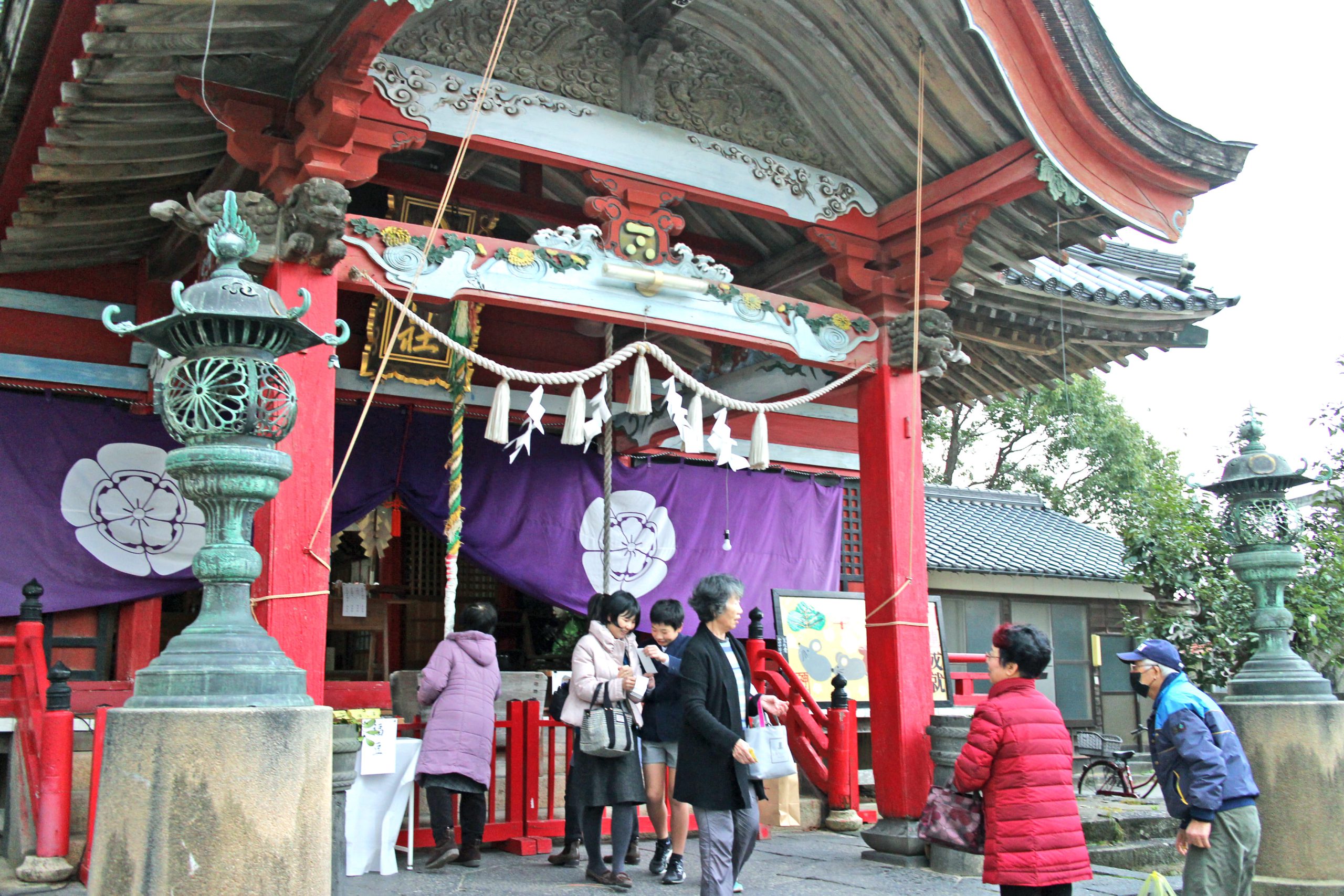- >
- Nanavi News
- >
- Setsubun Senzaki mini scattering” Monitor Practice Report
Setsubun Senzaki mini scattering” Monitor Practice Report
-
Last updated:
Feb 6, 2020
-
About the writer:
Nagato Tourism Convention Association

Looking for signs of spring
The "sanso" (bicycle touring) is a way of enjoying encounters and discoveries unique to a certain place and time of year by riding a bicycle as if you were taking a walk.
The tourist information center "YUKUTE" is planning to offer visitors the opportunity to enjoy "sanso," or "sprinkling," unique to Nagato City in each season.

Senzaki HIMONO Scatter Run" monitoring tour
The plan planned for this year's monitoring is the "Senzaki Setsubun Mini Scattering" to pay a visit to " Yasaka Shrine" in Senzaki on February 3, the day of the Setsubun holiday, and enjoy the scenery by the sea.

Rent a bicycle from the tourist information center, YUKUTE, and head for the shrine.
During the Setsubun Festival at Yasaka Shrine, lucky beans were given out and Dondoyaki (burning of the gate) was held, and the shrine was crowded with people from the community who came to pay their respects with New Year's decorations and omochidashi (money given as talismans).
First, you will worship at the hall of worship and receive lucky beans.
Next, while sitting by the fire of the "Dondoyaki", people pray for good health and safety for the year ahead.
Dondoyaki" is a fire festival in which New Year's decorations, New Year's calligraphes, omamori (talismans), and other decorations are collected and burned.
Generally, it is held on January 15, the small New Year's day, but some shrines in Nagato City hold it in conjunction with the Setsubun Festival.


At a stall in the precincts of the shrine, local Senzaki sweets, "Oni no Boko" (devil's stick), and other Japanese sweets in soft colors that remind us of the coming of spring were on sale.
The shop owner, who was also a member of the group, said, "If you come to Yasaka Shrine for the Setsubun Festival, you can't miss the devil's stick," as he bought Daifuku strawberry rice cake, Uguisumochi rice cake, and Sakura Mochi rice cake as well.
About the devil's stick
Local Media in Nagato Please take a look at " A look at Toraya's "Oni no stick," a classic Setsubun confectionery " in Nagato.

After paying your respects, head north along Honmachi-dori Avenue, a street that remains on old maps from the Edo period.
The "Honmachi Dori" is decorated with a "gallery panel" of poems by Misuzu Kaneko, a children's poet born in Senzaki, accompanied by pencil drawings by Shingo Ozaki, an illustrator, and by scanning the QR code, visitors can listen to Misuzu's poems read by local residents.


Next, we stopped at Suzaki Shrine, an excursion site of Yasaka Shrine, and cycled slowly while gazing at the Aomi Bridge to " Bentenjima," which Misuzu composed as one of Senzaki's eight scenic spots.
Bentenjima" was a solitary island in Senzaki Bay in the early Showa period when Misuzu was a child, but it has been reclaimed and is now part of an artificial island.
From the bridge over the man-made island, we could see the Aomi Bridge and Senzaki Fishing Port from a different angle.
On a fine day, you can enjoy the view of the harbor illuminated by the sparkling morning sun and the town of Senzaki dyed in beautiful sunset colors.

The original name of Bentenjima was "Matsuojima" (松生島).
It seems that the name "Bentenjima" came to be called "Bentenjima" because Itsukushima Shrine, whose main deity is Benzaiten, a deity believed to protect maritime safety and fishery, is enshrined there.
As I was paying my respects, a local told me, "Benten-sama is enshrined in a small shrine over here.

The wind from the sea was still cold, but it was "spring" according to the calendar as Risshun (the first day of spring) arrived.
The sun's legs will gradually grow longer and the sunlight will become softer.
The season when it is pleasant to ride a bicycle will soon be upon us.
We invite you to experience a bicycle trip that begins at the tourist information center YUKUTE.


